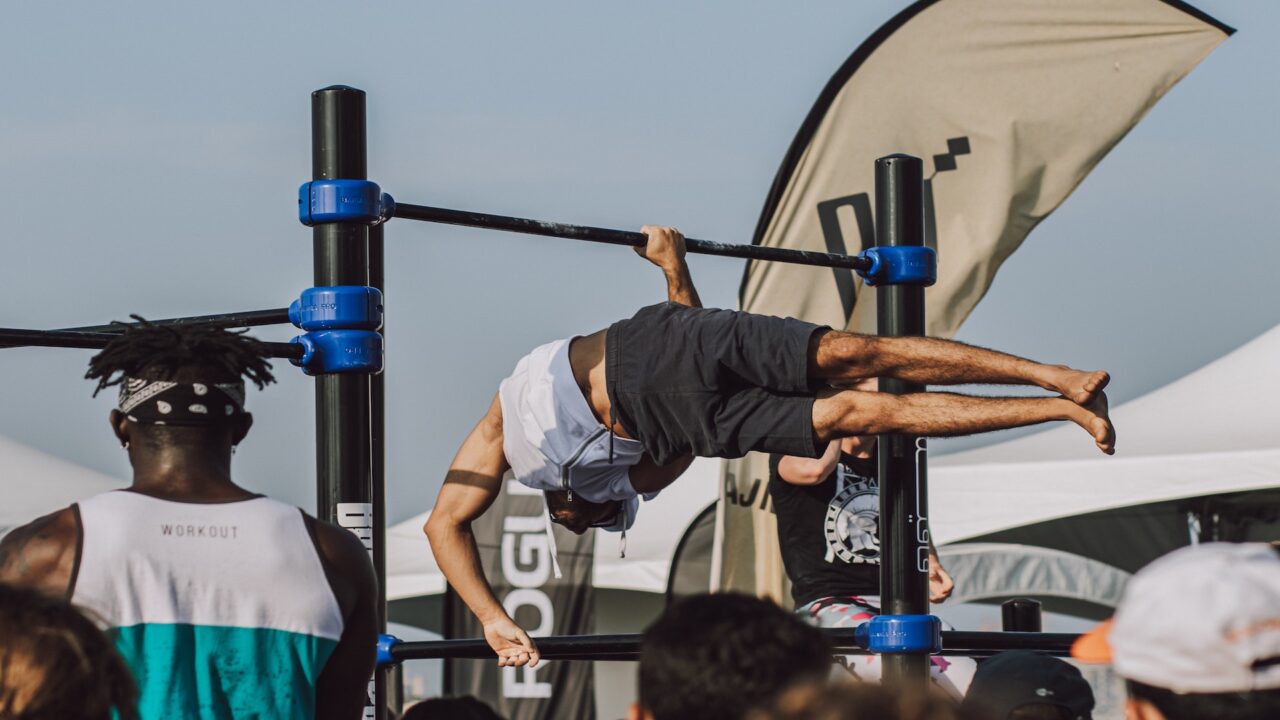How Many Pull Ups Can the Average Man Do?
Pull ups are an exercise that can transform your current level of fitness. They both increase strength and do a great deal to help with your body’s symmetry. Additionally, they are a great addition to any effective weight loss program.
Let’s forget what the average man can do for now. Besides, it seems almost impossible to find an accurate number for how many pull ups the “average man” can do.
What seems to matter is what you need to know in order to be able to do pull ups. It seems like once you get to the point where you know how to do pull ups and can progress in strength, you’ll find yourself asking how many more pull ups can I do today than I could yesterday?
There seems to be a great deal of talk about pull ups lately. It sounds like some of you avid gym-goers tend to forgo bodyweight exercises altogether. If you’re currently looking to enhance your weight loss program, pack on a little more muscle, or increase your strength, you ought to incorporate these exercises.
The focus of this short, informative blog post is going to be pull ups.
*Side note: it’s totally understandable if bodyweight exercises like these have been omitted from your routine. Sometimes it’s easy to get caught up in more complex movements. This can mean the simple, yet beneficial, movements can get put on the low priority list.
Pull ups have great utility for both increasing overall strength and achieving a symmetrical physique.
Many questions seem to bubble to the surface when you approach something you’re not used to doing. If you’re not used to doing these exercises regularly (or at all), some questions you may have are:
How many should I be able to do?
How many pull ups a day will give me the physical increases I’m looking for?
How do I do a pull up?
How thick or thin should the bar I’m using be?
Should I work toward doing weighted pull ups?
What muscle groups does this exercise work?
These are all great questions. Additionally, these questions ought to be answered before you add pull ups to the workout portion to your weight loss or strength conditioning program.
When you’re finished reading this blog post, you will go from someone who may not know how important pull ups are for your longterm weight loss program and strength conditioning practices, to someone who has a more complete understanding of the the exercise itself. Additionally, you will be able to incorporate these right away in order to experience the benefits as soon as possible.
Let’s get to work!
How many calories do pull ups burn?
This is a difficult question to answer with a high level of accuracy. According to Livestrong it depends on multiple factors:
- Weight of person doing them
- Frequency (number reps in a certain amount of time)
- Speed of contraction over time (how slowly or quickly they are done)
- Breathing rate/heart rate/oxygen consumption (similar to fitness level)
A less-accurate calculation can be found here. Type in your weight (pounds), select “pull ups” from the drop-down menu, and press “go.”
You’ll find that the measurement will be in calories (kcal) burned over time (minutes). If you’re looking for a more accurate representation of calories burned for you, see how many pull ups you can do in one minute and see where it fits in the chart that reflects your weight in pounds.
For instance, if for your weight the chart shows 5 calories burned in one minute, and you can crank out five in one minute, theoretically each pull up you do burns one calorie.
You can probably see how that number changes as you do more and more of them. As you continue to expend energy doing pull ups, the factors listed above ebb and flow to give you your actual calories burned.
It looks like it’s quite a challenge to get an accurate number for how many calories pull ups actually burn.
This is a great example of how controlling the calories you eat seems to be the most accurate way to account for calories as a whole. There are so many unique variables that go into energy expenditure (calories burned) from exercise. It’s best to measure the volume (reps x sets x weight) instead of estimating the calories exercise burns. If you’re looking for a common sense way to accurately track your workouts for free, click here.
How to do a pull up
The American College of Sports Medicine has a great video (shown above) on how to do a proper pull up.
How to do a pull up
A written description can be read below:
- Start with your hands on the bar approximately shoulder-width apart with your palms facing forward. (As you become more advanced, this length can vary depending on what muscles you decide to target).
- While extending your arms, stick your chest out and curve your back slightly by slightly lowering your shoulder and protruding your chest. Consider this your starting position.
- Pull yourself up towards the bar using your back until the bar is at chest level while breathing out. Think about squeezing your upper back together while pulling yourself up chin-level with the bar.
- Slowly lower yourself to the starting position while breathing in. This is one rep.
How to grip a pull up bar
First things first, how to grip the bar.
Pull ups consist of grabbing the bar with your palms facing away from you, not to be confused with chin ups that consist of grabbing the bar with your palms facing toward you.
*Side note: your bar may be too high to grab without assistance. If this the case for you, please use something sturdy to stand on to make sure your grip is correct before beginning. Also, use a spotter if necessary. Grabbing the bar incorrectly while simultaneously straining to get your head above the bar can risk injury.
Your fingers have three sections separated by lines. For the purposes of this blog post, let’s label your fingers this way:
the section containing your finger tips is the top section (Distal phalanges), the middle section (Intermediate phalanges) lies just below the top section, and the third section (Proximal phalanges) lies under your middle section touching the palm of your hand.
Line the third section of both hands across the bar equidistant from one another. When you’re doing a pull up for the first time, grip bar the same length as your shoulders.
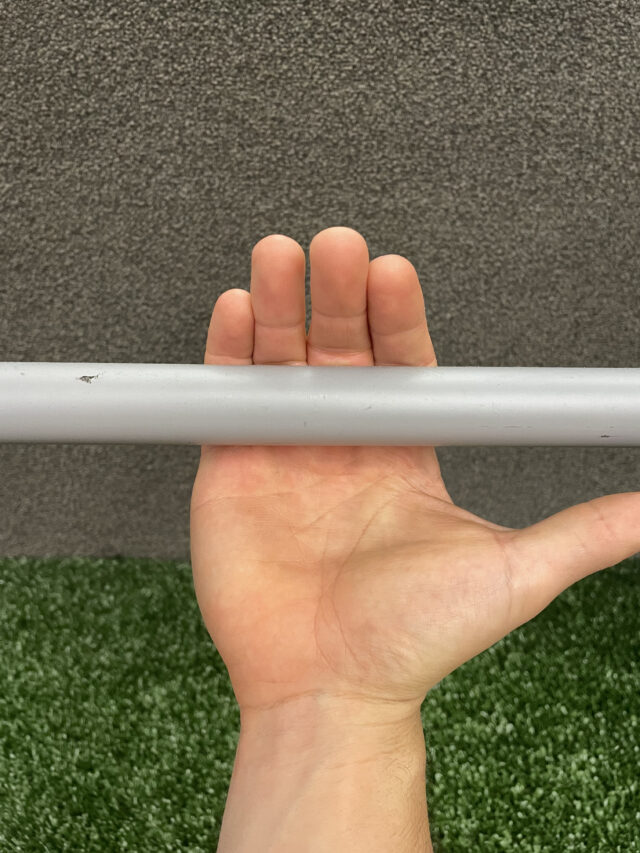
Keeping your wrists unmoving, curl your fingers across the bar allowing the third section of both hands to curl naturally around the bar with your fingers
You have two options for thumb placement
-
- Wrap thumb around the bar, maintaining grip along your index finger’s top section
- Elongate your thumb so that it’s parallel with the bar and let the meaty part of the palm that is connected to the thumb (Thenar eminence) touch the bar.

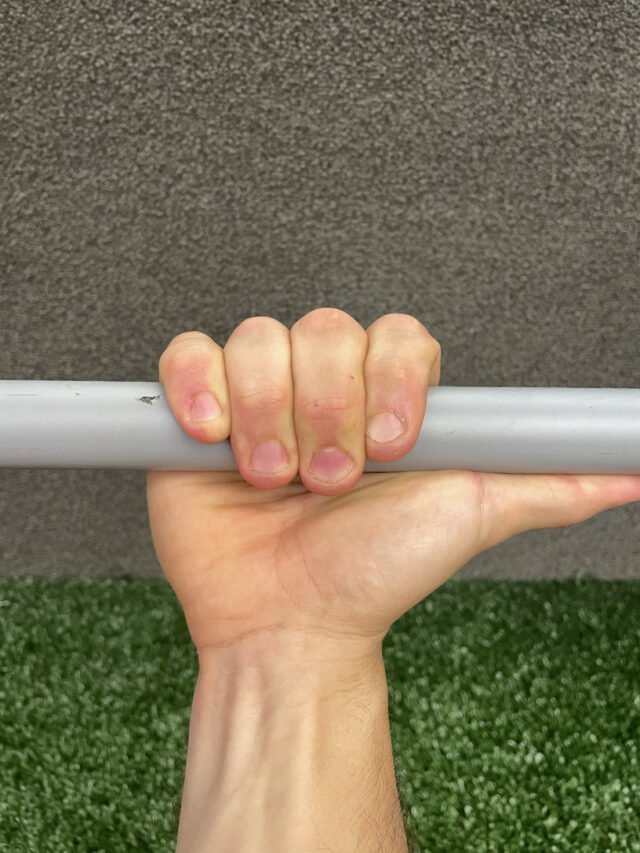
What is the best diameter for a pull up bar?
According to various sources, as well as checking manufacturer specifications on various pull up bar models, it seems like the common diameter is between 1.25-1.75 inches.
As you begin incorporating pull ups into your weight loss or strength training program, you’ll inevitably get better at them. Given that you’re reading the Cornerstone Weight Loss Blog, you’re the kind of person who desires to constantly progress.
As you get more and more advanced with in your pull ups skills, varying the type of bar and grip will most-likely happen. When that happens, feel free to experiment on thicker and thinner bars and see what helps you progress in the direction you wish to go.
How to use resistance bands for pull ups
How to use pull up bands is a common question because it just looks so darned awkward. Though the appearance seems odd, these resistance bands for pull ups can help you through your novice stages of your pull ups skills.
There is an argument that using resistance bands for pull ups may stunt your growth in terms of your pull ups strength, but that doesn’t seem right. Lowering the thickness of the resistance band as you progress in your pull ups strength works the same way as progressively increasing the weight of any resistance training exercise.
If you disagree, please leave a comment below or email mike@cornerstoneweightloss.com.
Here’s the step-by-step method for how to use pull up bands:
- Attach the resistance band to the bar using the pictures below as a guide. If need be, use something sturdy to stand on. Use a spotter, especially when you’re just starting out.
- Pull down on the resistance band and place either both knees or both feet into band. As you progress, you may work down into only putting one knee or one foot into the band.
- Complete a pull up as described in the section labeled “How to do a pull up.”
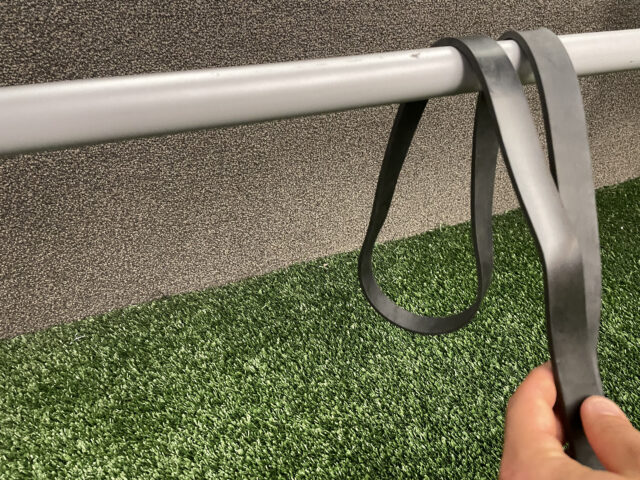

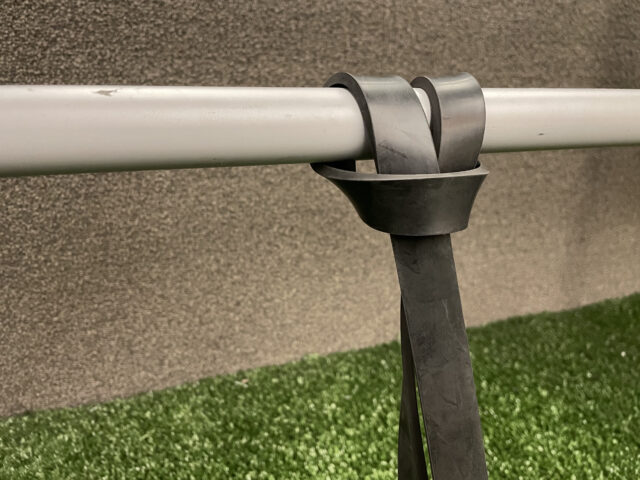
How to use assisted pull up machine?
If you don’t know what an assisted pull up machine is, please see below.

The assisted pull up machine helps relieve some of the weight from your body while doing a pull up, similar to how the resistance bands work. The assisted pull up machine, however, it a lot simpler to use.
Here’s how to use the assisted pull up machine:
- Set the desired weight you wish to remove from your pull up. Some machines use a pin, others use a switch, while others may use a knob. Either way, same idea.
- Grab the pull up bar as per section “How to grip a pull up bar.”
- Place your knees on the pad. This is applying a counterweight to your body weight, thereby assisting your exercise
- Complete a pull up as per section “How to do a pull up.”
How to do weighted pull ups
This is the section for the more advanced practitioner. There are multiple ways to to weighted pull ups.
For purposes of simplicity and common sense, we are going to stick with three effective tools and their pros and cons:
- Weighted Vest: can be somewhat costly, however is very convenient. You can easily vary the weight by placing more or less weight in the vest’s compartments. Additionally, you can vary the tightness of the weight vest against your body. This provides you with more stability and makes you less prone to injury.
- Chain Belt or Dip Belt: A cheaper option than the weighted vest, however it can be very awkward to wear. It seems like you’re in a wrestling match with the weights as you waddle to the bar. Furthermore, it’s more difficult to adjust for comfort.
- Dumbbells: you’re probably racking your brain thinking about how to do this. It’s quite simple, actually, but wickedly uncomfortable. Placing the dumbbell on the floor directly below the bar, you can grab the dumbbell with your toes. Obviously this is the cheapest method (free), however, if done incorrectly it can lead to some aches and pains. This is a bit of a last resort, but if you’re advanced and comfortable enough to do this it’s an effective weighted pull up.
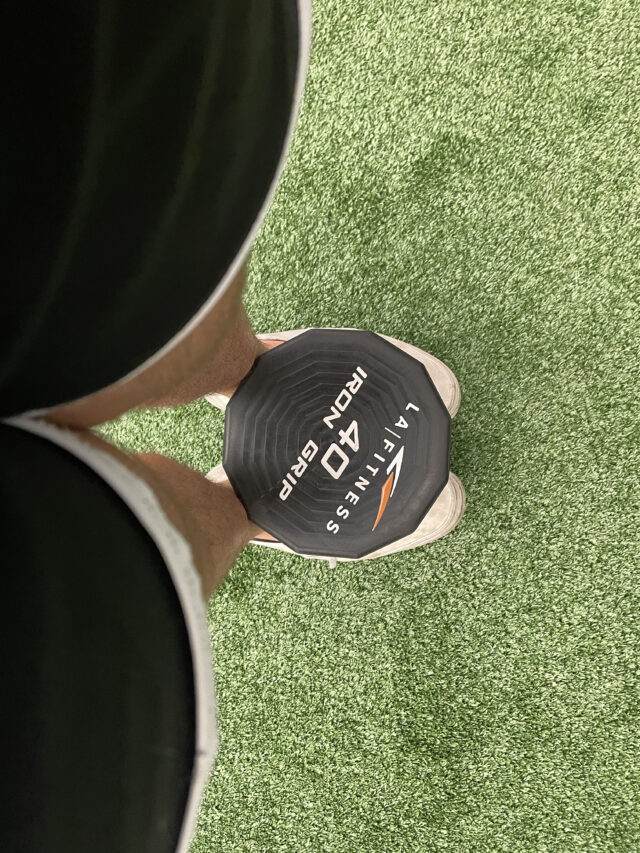
When you have found the added weight method of choice for you, proceed with your pull ups per section “How to do a pull up.”
What do close grip pull ups work?
First things first, what is a close grip pull up?
Putting it as simply as possible, think of the standard pull ups grip: grabbing the bar with your palms facing away from you as per section “How to grip a pull up bar.”
Take that grip, rotate your right hand clockwise and your left hand counterclockwise until your palms face one another.
Bring your hands together at any length that is less than shoulder width apart.
Now, find the grip on the pull ups bar that has the same conformation of your hands and complete a pull up with the same methods as per section “How to do a pull up.”
*Side note: these particular grips usually are connected to the pulley machines at your gym. They will look like two, 8-10 inch parallel bars that are facing you.
What do close grip pull ups work?
Both close grip pull ups and regular pull ups tend to focus on the Lattismus dorsi (lats), however, as your grip gets closer and closer together, there is more emphasis on your inner lats. Additionally, you get more of a shoulder and bicep workout the closer your grip gets.
Both the close grip and regular grip pull up work your abdominal muscles.
You’ll notice that the closer your grip gets, the easier it is, given that you have no pre-existing shoulder injuries.
What Muscle Groups Do Pull Ups Work?
Here’s a quick run-down of the muscles worked -and not worked- when you do pull ups:
Do Pull ups work triceps?
Your triceps (triceps brachii) are used to extend your elbow to move your hand away from your body. Though your whole body works as a system, typically triceps are not the focus of a pull up because it’s not a muscle group that is being contracted.
Do pull ups work rear delts?
Your rear delts (posterior deltoids) are used in completing a pull up, however it’s not one of the primary muscle groups being trained.
Do pull ups work chest?
As you read in section “Do pull ups work triceps?” you’re whole body works as a system, however if you’re looking for a workout that specifically targets your chest muscles, pull ups aren’t it.
Do pull ups work abs?
Yes, pull ups are a fantastic abdominal workout. Pull ups are help aid in strengthening your core.
Do pull ups work biceps?
Yes! The wider your pull ups grip the less engaged your biceps become. The closer your pull ups grip the more engaged your biceps become.
Do pull ups work shoulders?
Shoulders are not the primary muscles used during your pull ups session, however they are engaged secondarily during the exercise.
Do pull ups work traps?
Yes, the traps (Trapezius) are worked during a pull ups exercise.
Do pull ups work forearms?
Yes, no matter what grip you choose, pull ups work your forearms muscles.
At Cornerstone Weight Loss we help you better understand how food affects your body in a common sense way that will put you in control of how you look. In order to get in touch with a professional who can help tailor your weight loss plan to you, click below, fill out the information, and a member of the Cornerstone Weight Loss team will reach out to you to get the results in weight loss you deserve.


